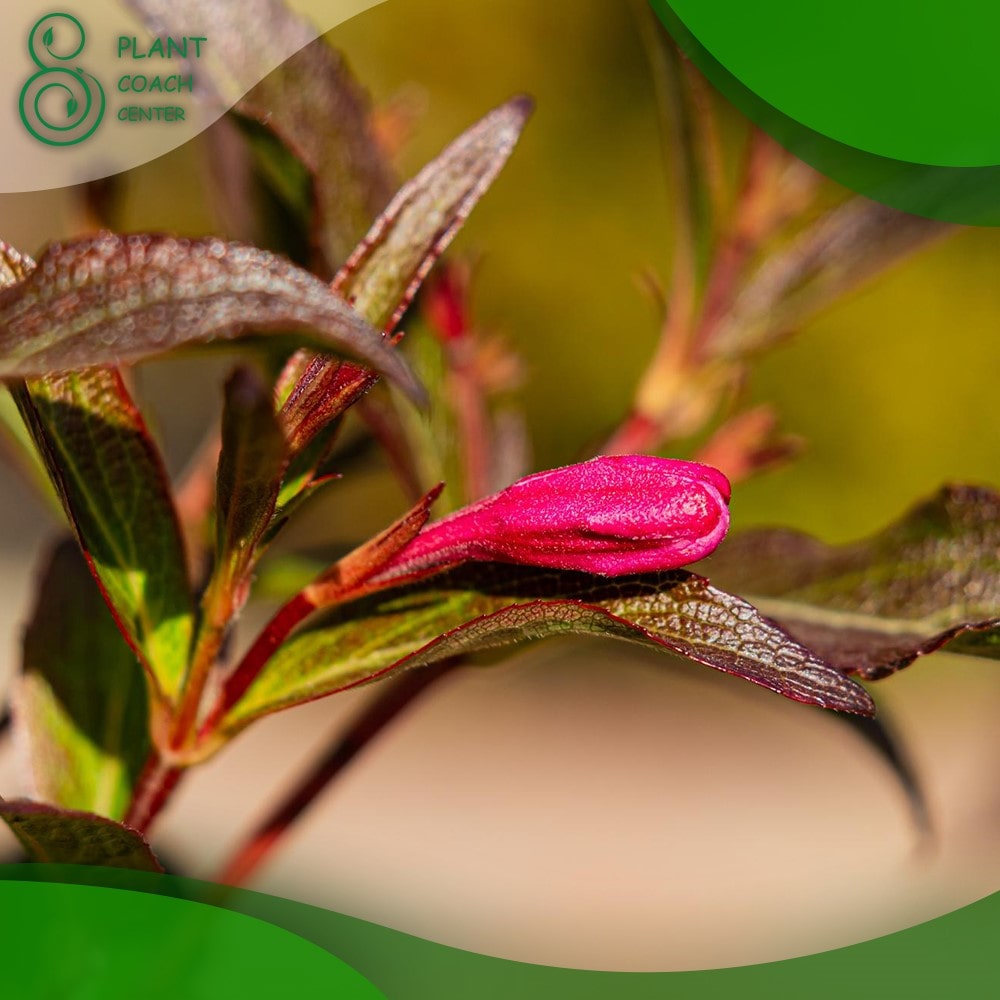When to Cut Back Weigela
Weigela plants have become popular among garden enthusiasts and landscapers with their captivating blooms and vibrant foliage. Proper pruning techniques are essential to maintain the health and beauty of these lovely shrubs. Pruning enhances the aesthetic appeal of Weigela and promotes the plant’s overall health and vigor. In this comprehensive guide, we will delve into the art of plant coaching for Weigela, focusing on knowing the right time to cut back these delightful shrubs.
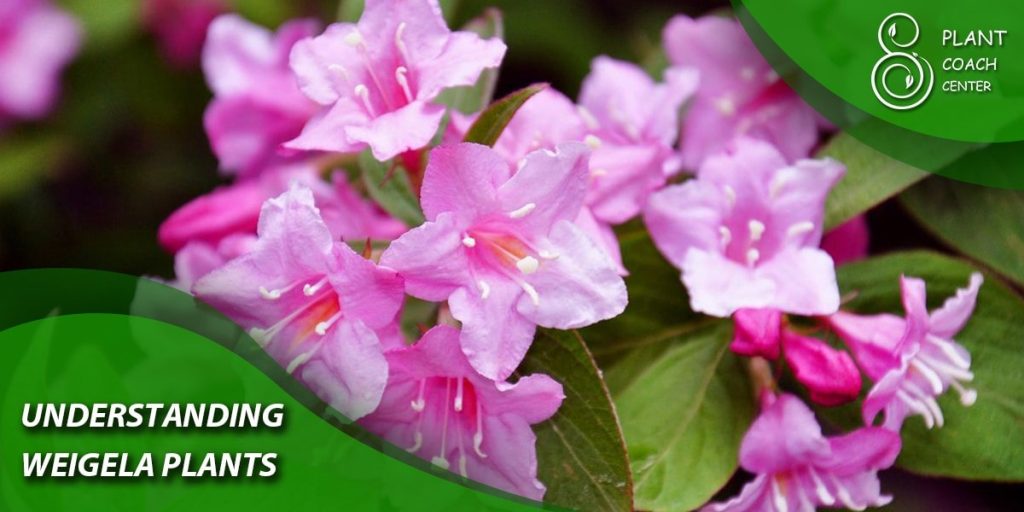
Understanding Weigela Plants
Before we embark on the pruning journey, let’s acquaint ourselves with Weigela plants. These deciduous shrubs are native to East Asia and belong to the Caprifoliaceae family. With numerous cultivars available, Weigela offers a range of sizes, flower colors, and growth habits.
Some popular cultivars include ‘Wine and Roses,’ ‘Sonic Bloom,’ and ‘Midnight Wine.’ Weigela plants are known for arching branches, green leaves (which may take on reddish or purple hues), and trumpet-shaped flowers blooming in late spring to early summer.
The Benefits of Pruning Weigela
Pruning is vital to Weigela plant care, offering several benefits that contribute to their long-term health and beauty. First and foremost, pruning helps remove dead, damaged, or diseased branches, preventing potential sources of infection and enhancing the plant’s natural defense mechanisms. By selectively thinning out crowded or crossing branches, we can create a more open and airy structure, reducing the risk of fungal diseases caused by poor air circulation.
Well-timed and proper pruning enhances the plant’s aesthetic appeal, ensuring it maintains a balanced and pleasing form. A well-pruned Weigela is a visual delight and encourages prolific flowering and better energy allocation to new growth, leading to a healthier and more vigorous plant overall. Lastly, pruning can help control the shrub’s size, making it more manageable within the desired garden space.
Pruning Fundamentals
To achieve the best results when pruning Weigela, it is essential to understand the basics of this horticultural art. The right tools are the first step; sharp and clean pruning shears, loppers, and saws are crucial for precise cuts promoting rapid healing. Familiarizing oneself with the different types of pruning cuts, such as heading cuts, thinning cuts, and rejuvenation cuts, enables gardeners to approach pruning confidently and skillfully.
Timing is another critical factor in pruning Weigela. The best time to cut back these shrubs depends on various factors, including the species or cultivar, local climate and hardiness zone, and the plant’s specific growth stage.
When to Cut Back Weigela
Seasonal Considerations for Pruning
Pruning Weigela can be timed according to the plant’s growth cycle and blooming patterns. The three primary periods for pruning are spring, summer, and fall, each with distinct advantages and considerations.
- Spring Pruning:
Spring is ideal for light pruning and shaping Weigela plants, especially right after blooming. By pruning in late spring, you allow the shrub to focus on producing new growth and setting flower buds for the next year. Be cautious not to prune too late into spring, as this may remove the forming buds and reduce the following year’s bloom.
- Summer Pruning:
Summer pruning is often a practice of necessity rather than choice. If you notice any dead or diseased branches during the growing season, promptly remove them to prevent the spread of pests or diseases. Additionally, light summer pruning can help shape the plant further. However, avoid heavy pruning during this time, which may lead to a diminished flower display in the following season.
- Fall Pruning:
Fall pruning is generally discouraged for Weigela, particularly in regions with harsh winters. Pruning during this time may stimulate new growth vulnerable to winter frost damage. The best approach in fall is to hold off on pruning and allow the plant to prepare for winter dormancy.
Signs It’s Time to Prune
Apart from adhering to specific seasonal timings, some visual cues can help you determine when your Weigela is due for a pruning session:
- Overgrown or Leggy Branches:
Suppose your Weigela appears excessively dense or has long, leggy branches reaching beyond the desired form. In that case, it may benefit from pruning to maintain a more compact and balanced shape.
- Lack of Flowering:
A Weigela that used to be abundant in blooms but has stopped producing flowers may require rejuvenation pruning. Removing old wood and encouraging new growth can rejuvenate the plant and restore its flowering vigor.
- Disease or Pest Infestations:
Pruning can serve as a preventive measure against pests and diseases. If you notice any signs of infestation or disease on your Weigela, targeted pruning of affected branches can help contain the problem and reduce the risk of spreading.
Factors to Consider When Deciding on Pruning Time
Choosing the right time to prune Weigela involves taking various factors into account to ensure the best results:
- Climate and Hardiness Zone:
Different regions experience varying weather patterns and frost dates, which directly impact the timing of pruning. In colder climates, it’s best to delay spring pruning until the risk of frost has passed to protect new growth.
- Weigela Species or Cultivar:
Certain Weigela species or cultivars may have specific pruning requirements. Some varieties flower on old wood, while others bloom on new growth. Understanding the growth habit of your specific Weigela will help you time your pruning accordingly.
- Plant’s Overall Health and Growth Stage:
A healthy Weigela responds better to pruning, as it can allocate energy more efficiently to new growth and healing. Consider the plant’s overall health and the current growth stage before pruning.
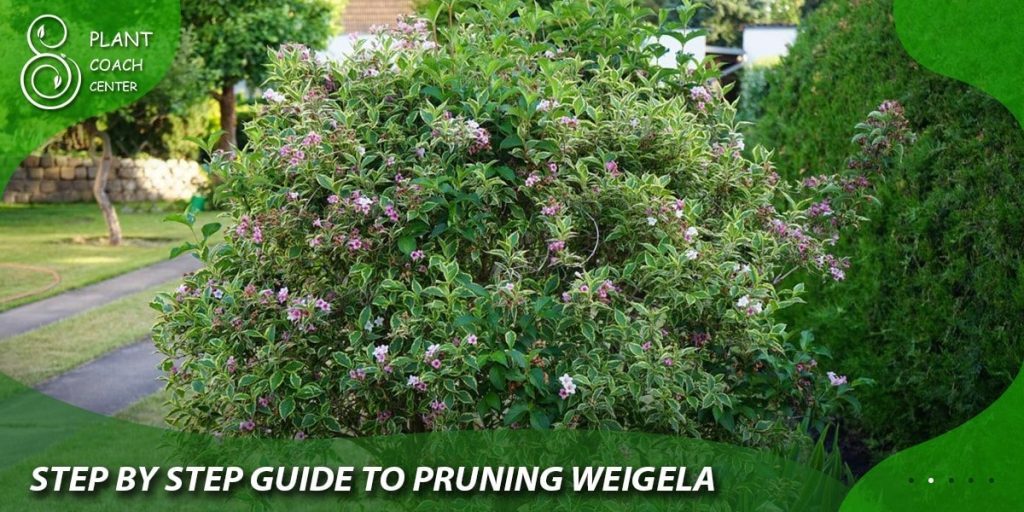
Step-by-Step Guide to Pruning Weigela:
Now that we have a good understanding of when to cut back Weigela, let’s dive into the step-by-step process of pruning these delightful shrubs to achieve the best results:
Preparing for Pruning
- Gather the Necessary Tools and Equipment:
Before you begin pruning, assemble all the required tools, including sharp bypass pruning shears, loppers for thicker branches, and a pruning saw for larger cuts. Ensure your tools are clean and sanitized to prevent the spread of diseases.
- Ensuring Proper Sanitation for Tool Maintenance:
Disease transmission can occur through unclean pruning tools. To avoid this, disinfect your pruning equipment by wiping the blades with rubbing alcohol or a diluted bleach solution before and after each pruning session.
Assessing the Plant’s Structure
- Start by observing your Weigela shrub from all angles. Identify branches crossing or rubbing against each other and those that appear weak or damaged.
- Look for any dead, diseased, or infested branches. Removing these branches first will improve the plant’s health and provide a clearer view of the shrub’s structure.
Pruning Techniques for Different Types of Branches
- Pruning out Dead, Damaged, or Diseased Branches:
Using sharp pruning shears, make clean cuts just above the branch collar—the raised area where the branch meets the main stem. Removing dead or diseased branches allows the plant to focus its energy on healthy growth.
- Thinning Out Crowded or Crossing Branches:
Thinning out involves removing entire branches at their point of origin to open up the shrub’s interior. This technique improves air circulation and sunlight penetration, reducing the risk of fungal diseases.
- Shaping and Reducing Size:
To shape your Weigela, prune branches to achieve a balanced and natural appearance. Remember the shrub’s desired size and shape, and avoid excessive pruning that may compromise flowering potential.
Tips for Achieving a Balanced and Natural-Looking Form
Step back occasionally while pruning to assess the shrub’s overall appearance. Aim for a symmetrical shape and avoid over-pruning one side, which can result in an imbalanced form.
Take your time and be patient. Pruning is an art that requires careful consideration. Making small adjustments and revisiting the plant later for further refinement is okay.
Dealing with Larger or Neglected Weigela Plants
If you have an older or neglected Weigela shrub that requires more intensive pruning, consider a rejuvenation pruning approach. This involves cutting the entire shrub to about one foot above the ground during the plant’s dormant season.
After rejuvenation pruning, the shrub will send out new shoots. With proper care, it will regain its vigor and beauty over time.
Aftercare and Maintenance Following Pruning
give your Weigela extra care to support its recovery after pruning. Ensure the plant receives adequate water, especially during dry periods, to promote new growth.
Consider adding a layer of organic mulch around the base of the shrub to retain moisture, suppress weeds, and provide essential nutrients as it decomposes.
While your Weigela is recovering from pruning, avoid heavy fertilization, as this may stimulate excessive growth at the expense of flowering. Instead, opt for a balanced, slow-release fertilizer that provides essential nutrients in a controlled manner.
Regularly monitor your Weigela for any signs of new growth or potential issues. Promptly address any emerging pest or disease problems to prevent them from spreading further.
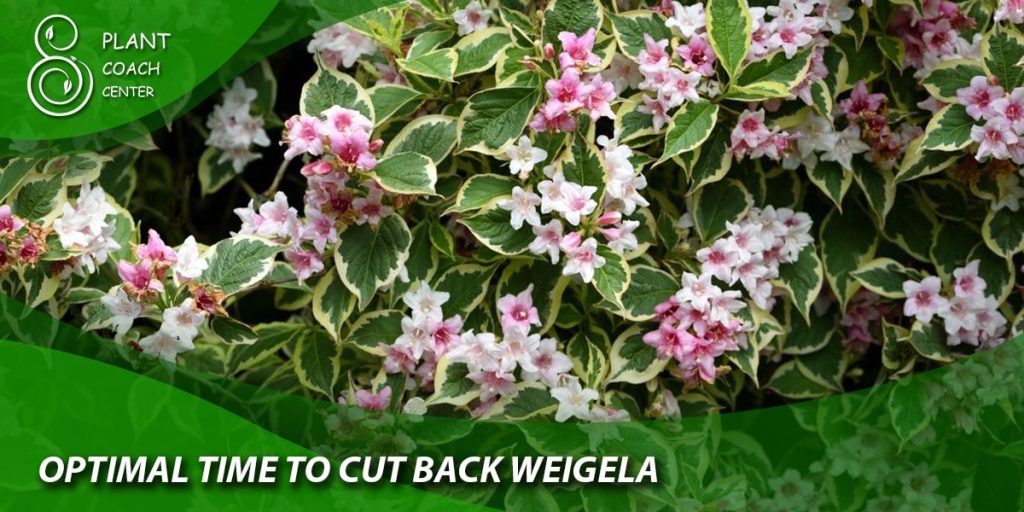
Common Problems and Troubleshooting
As much as we strive to provide the best care for our Weigela plants, they may encounter challenges. Understanding common issues and their remedies will help you maintain a healthy and thriving shrub.
- Pests and Diseases:
Weigela plants are generally resilient but can still fall victim to pests such as aphids, spider mites, and scale insects. Regularly inspect the leaves and stems for any signs of infestation. If you notice pests, use natural remedies like neem oil or insecticidal soap to control the population.
- Nutritional Deficiencies:
Yellowing leaves, stunted growth, and poor flowering can be signs of nutrient deficiencies in your Weigela. Soil tests can help identify the lacking nutrients, and appropriate fertilization can rectify the problem. Incorporate a balanced fertilizer or add specific nutrients like iron or magnesium.
- Environmental Stressors:
Extreme weather conditions, improper watering, or inappropriate soil conditions can stress Weigela plants, making them more susceptible to diseases and pests. Be attentive to their needs and adjust care accordingly to minimize stress.
Pruning Strategies to Mitigate Common Problems:
- Preventing Disease Spread through Pruning Cuts:
Sterilize your pruning tools between cuts when dealing with diseased branches. This prevents the transmission of pathogens to healthy parts of the plant.
- Encouraging Airflow and Reducing Pest Habitat:
Thinning out dense growth will improve air circulation, making the plant less inviting to pests and less prone to fungal diseases.
- Promoting Overall Plant Health through Proper Pruning:
Regularly removing dead or diseased branches will contribute to your Weigela’s overall health and vitality, making it better equipped to resist various challenges.
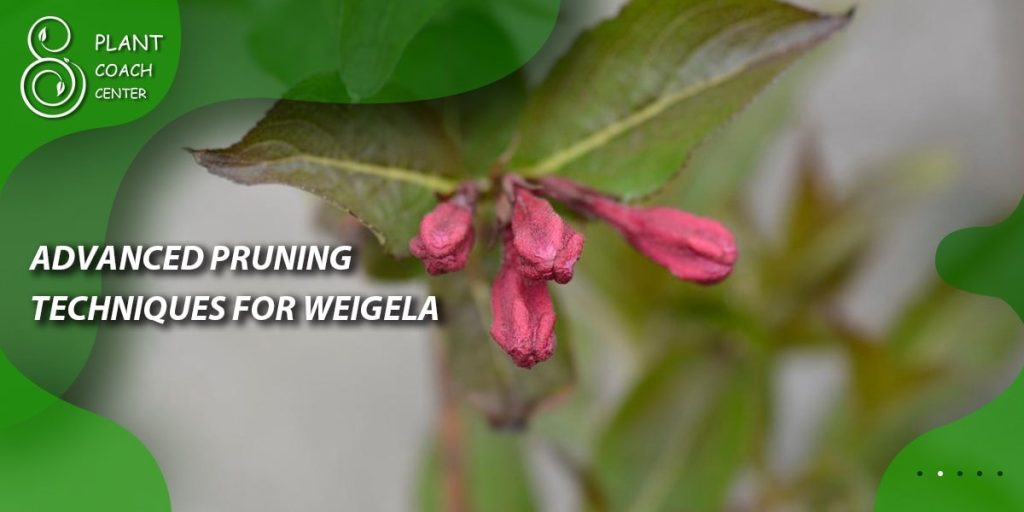
Advanced Pruning Techniques for Weigela
Rejuvenation Pruning for Older or Neglected Plants
As mentioned, rejuvenation pruning involves cutting back the entire shrub to rejuvenate an older or neglected Weigela. This technique can breathe new life into the plant and restore its health and appearance.
Pollarding and Topiary Pruning Styles
For those looking to create unique and artistic forms, consider experimenting with pollarding or topiary pruning. These techniques involve precise cuts to shape the plant into desired patterns or structures.
Espalier Techniques for Creating Decorative Forms
Espalier is a technique used to train Weigela to grow flat against a wall or support, creating a decorative and space-saving display.
Beyond Pruning: Additional Care Tips for Weigela Plants
While pruning plays a crucial role in the care of Weigela plants, other aspects of maintenance contribute to their overall well-being and vitality.
Watering and Irrigation Guidelines
Weigela plants appreciate consistent moisture but are relatively drought-tolerant once established. Water deeply and evenly, providing enough moisture to reach the plant’s root zone. Avoid overwatering, which can lead to root rot and other water-related issues.
Fertilization and Soil Amendments
Before planting:
- Amend the soil with organic matter to improve drainage and nutrient retention.
- Once established, apply a balanced fertilizer in spring to provide essential nutrients for healthy growth.
- Avoid over-fertilization, as excessive nitrogen can lead to excessive foliage at the expense of flowers.
Mulching and Weed Control Strategies
Apply a layer of organic mulch around the base of your Weigela to conserve soil moisture, regulate temperature, and prevent weed growth. Keep the mulch away from the plant’s stem to prevent rot and other issues.
Seasonal Maintenance Considerations
In addition to pruning, certain seasonal tasks can further enhance the health and appearance of your Weigela:
- Spring: As new growth emerges, apply a layer of compost or well-rotted manure to enrich the soil and provide a slow-release source of nutrients.
- Summer: Regularly inspect your Weigela for pests and diseases. Remove any faded flowers (deadheading) to encourage continuous blooming.
- Fall: Avoid heavy pruning in fall, as it may stimulate new growth susceptible to frost damage. Instead, remove fallen leaves and debris to prevent pest and disease issues.
Last words
When to cut back Weigela is a crucial question every gardener faces when caring for these enchanting shrubs. By understanding the right timing, proper techniques, and the art of plant coaching, you can maintain healthy and beautiful Weigela plants year after year.
Pruning improves the aesthetic appeal of Weigela and promotes overall plant health and vigor. Through careful observation, proper tool usage, and thoughtful pruning, you can help your Weigela thrive and provide a stunning display of flowers in your garden.
Remember that Weigela plants, like all living beings, require attentive care, and the rewards are undoubtedly worth the effort. Combining plant coaching knowledge and pruning skills, you can create a beautiful, vibrant, and healthy Weigela garden that brings joy and delight to you and all who visit.
When is the best time to prune Weigela?
Spring after blooming or during late winter.
How can I rejuvenate an older Weigela plant?
Perform drastic pruning during its dormant season.
How often should I water Weigela shrubs?
Water deeply, 1-2 times per week during dry spells.


